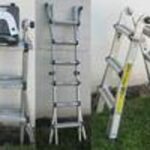Strawberries are produced on low-growing plants. You won’t need a ladder to pick this friut, but you’ll be bending and stooping. Healthy plants will produce runners, which creates more plants. It is generally a good idea to pull plants once they reach three years old.
There are two groups of strawberries available to the home gardener; summer varieties and everbearers. Summer strawberries produce only once per season and is favorable if you want a very large crop all at once. Everbearing strawberries produce fruit all throughout the summer. Everbearing varieties have a tendency not to produce as many runners as the summer varieties.
Strawberries do well in beds, containers, old whisky barrels, window boxes and just about anything else you can imagine.
Choosing A Site And Preparing Your Soil
When you decide to plant your strawberries, make sure that your region is completely out of danger for frost. Make sure your site is sunny and protected from the wind. You should dig the soil about 1 month before you are ready to plant, adding plenty of garden compost to the soil. Make sure you have well drainage, but remember plants will also need a good supply of water during their growing season. Keep in mind strawberry beds are best if you can rotate their sites every two or three years. After digging your bed, smooth out the sight. Do not pack down the dirt.
Summer varieties can be planted in late summer or early spring. Plant everbearers in the early spring. Making sure the soil is loose, you can start to plant. Start off by making a small mound with a hole in the center. Gently set the plant into the center. Spread the roots out over the ground so they will be able to establish a better root system. Cover the roots with dirt, keeping in the shape of the mound. Plant and then water, preferably in the evening and not when it is humid.
Continous Care
Water everyday, preferably in the evening, until the plants become established. After the plants are established you should not have to water very often, unless you have very dry conditions. No fertilization is needed and you will need to be judicious in keeping the weeds pulled. Everbearing varieties should have there first early season blossoms removed to give the plant more durability to bear fruit.
As green fruit begins to appear on the plant, lay straw under the fruit. This keeps your fruit cleaner. Spread straw thickly, but evenly. Small black plastic may also be tucked around the plant, but you’ll have to weigh the plastic down. Punch holes into the black plastic to help water drain. Do not let water pile up around your plants, because it will tend to make your berries rot faster.
Birds are a common pest for strawberries. Plastic netting needs to be spread over your plants. Mice and squirrels will also munch down on unripe berries. Make sure the netting is easy to remove.
Harvesting Your Crop
You will probably have a strawberry crop for three to four weeks. Everbearing berries produce smaller crops and may continue for several months. Pick fruits only when berries become completely red. Do not pick until after the morning dew has dried and pick daily to avoid fruit from going to waste. Strawberries will turn quickly once they start. As you pick, toss any fruit that has gone bad or has been ate on by bugs. Use the strawberries as soon as possible after you pick to retain their flavor.
After Harvest
As the leaves begin to wilt, pests like to take advantage of the dying foliage. It’s a good idea to cut away all leaves–only the leaves. This is the safest way. Some people like to mow over their strawberry beds, and that’s okay, but you could damage the plants that will be needed for next year’s harvest. After trimming the leaves, rake up all debris and burn.
Keep your strawberry plants healthy, weeded and throw out the ones that are old and you’ll have a plentiful crop for many years to come.





